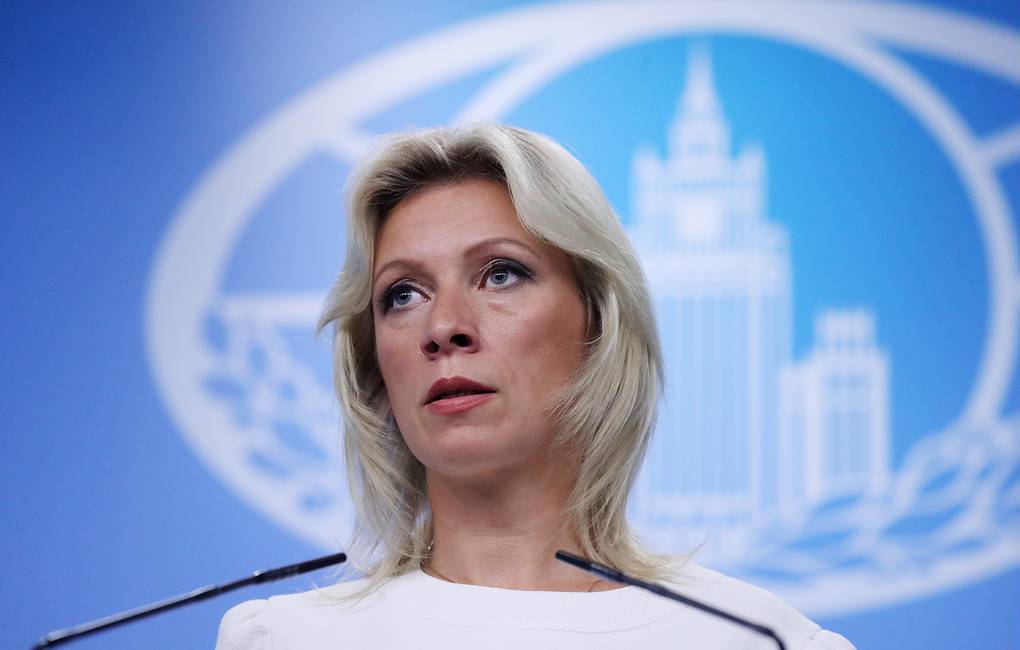Addressing a news conference in Davos, Cassis said that efforts are being made to bring Russia into peace discussions on Ukraine mediated by other countries and stressed that a peace conference could not be held without Russia’s participation.
“If it is about some countries’ desire to find a way out of the dead end they have been brought into by Washington, this is one thing. In this case, they should stop supplying weapons to Ukraine, stop imposing anti-Russian sanctions, and stop making Russophobic statements,” she told the Izvestia newspaper.
“If this rhetoric is geared toward drawing Russia into some sort of a psychedelic process on the West’s terms to influence Russia’s principled approaches, we won’t be lured into this trap,” she stressed.
Russia’s Defense Ministry has recently published statistics detailing the aid supplied to Ukraine from abroad during the conflict with Russia. According to its figures, Kiev’s foreign backers together have spent more than $203 billion on assisting the government of President Volodymyr Zelensky.
Some 54 countries have been providing assistance to the Ukrainian forces amid the fighting with Russia, the ministry announced.
More than 500 US and NATO spacecraft are working for the needs of Kiev. Those include 70 military surveillance satellites, while the rest are commercial but of double use, the ministry claimed in a post on Telegram.
Ukrainian troops are also relying on more than 20,000 Starlink terminals from Elon Musk’s SpaceX, according to the figures.
Kiev has been supplied with more than 1,600 units of missile and artillery equipment, over 200 air defense systems, some 5,220 tanks and armored vehicles, and more than 23,000 drones, the ministry said.
The Russian military’s estimates also claim that over 13,500 foreign mercenaries came to Ukraine to fight for Kiev. Among these were some 8,500 Europeans and over 2,700 from North and South America, while the rest traveled from Asia and Africa, it added.
Officials have estimated that a total of 5,900 visiting soldiers of fortune have been killed, while over 5,600 have fled the battlefield. The number of foreigners in the ranks of the Ukrainian military currently stands at over 1,900, according to Moscow.
In late November, Zelensky announced that Ukraine would switch from attacking to building fortifications, acknowledging that the counteroffensive, which had begun in early June and aimed to cut Russia’s land bridge to Crimea, had ended without success. Moscow estimates that Kiev has lost over 125,000 troops and 16,000 pieces of heavy equipment, including a lot of Western-supplied hardware, in its failed attempts to advance.
Since then, President Vladimir Putin and his Defense Minister Sergey Shoigu have both said that Russian forces have been holding the initiative in the conflict.
The flow of foreign military aid to Kiev has significantly reduced in recent months. In the US, Republican lawmakers are resisting attempts by the Biden administration to push through another $60 billion in assistance for Kiev, while Hungary has vetoed the EU’s planned four-year, €50 billion ($55 billion) aid package for Ukraine.
Ukrainian Foreign Minister Dmitry Kuleba told recently CNN that authorities in Kiev “don’t have a plan B” if the US funding doesn’t arrive in time.
Moscow has repeatedly warned that deliveries of weapons to Kiev by the US, EU and their allies will not prevent it from achieving the goals of its military operation and will only increase the risk of a direct confrontation between Russia and NATO. According to Russian officials, the provision of arms, intelligence-sharing, and training of Ukrainian troops means that Western nations have already become de-facto parties to the conflict.
